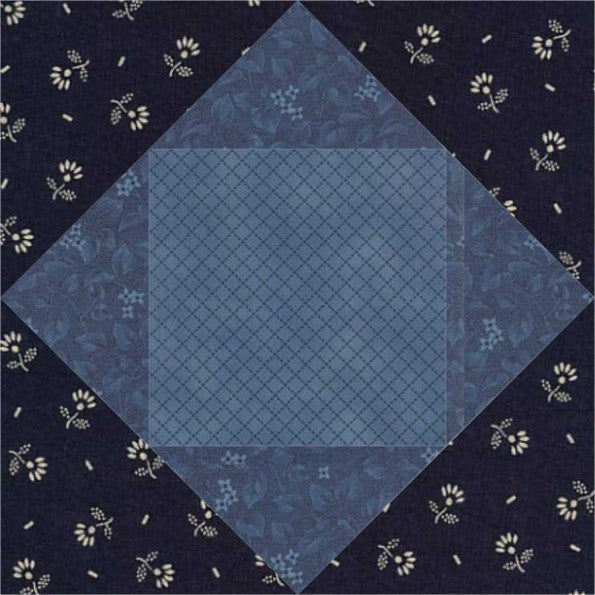

To sew an Economy Quilt Block, you'll need fabric, a sewing machine, and basic sewing supplies such as scissors, pins, and a rotary cutter. Here are the steps to follow:
-
Choose your fabrics: To create an Economy Quilt Block, you will need two contrasting fabrics. You can choose any color combination you like, but it's best to choose fabrics with a high contrast so that the block design will show up well.
-
Cut your fabric: Using a rotary cutter, cut two 5-inch squares from each of your fabrics. Then, cut each square diagonally to create four triangles from each fabric.
-
Arrange your triangles: Arrange the triangles so that each of the four resulting squares has two triangles of each fabric. You can arrange the squares in any order you like, but make sure to keep the fabric placement consistent across all four squares.
-
Sew the squares: Using a 1/4-inch seam allowance, sew the triangles together to create the four squares. Press the seams open.
-
Sew the squares together: Arrange the four squares in a larger square shape, with the colors alternating in a diagonal pattern. Sew the squares together, using a 1/4-inch seam allowance and pressing the seams open as you go.
-
Finish the block: Trim the edges of your Economy Quilt Block to make sure they are all straight and even. Your finished block should measure 9 inches square.
Repeat these steps to create as many Economy Quilt Blocks as you need for your project, and then sew them together to create your quilt top.
How to Resize Quilt Blocks:
The first step in modifying any quilt block is to decide on the size of your finished quilt block. You can come to a decision based on a number of factors: doubling a pattern, cutting your pattern in half, or choosing the size based on your available fabric.
NOTE: When working from a pattern’s cutting instructions, make sure you remove the seam allowance before doubling or tripling the size. For instance, if your pattern calls for 3-1/2″ squares, first you’ll subtract the sum of the seam allowances (1/2″), double the finished block size (from 3″ to 6″), and add the seam allowance back in (1/2″). So, when all is said and done, you will cut a 6-1/2″ piece of fabric.
Resizing Square Blocks:
Square blocks are the easiest to resize. Simply add to your finished block measurement. For example, if you’d like your finished block to be a 4″ square, you’ll need to cut a 4-1/2″ square of fabric.
Resizing Rectangular Blocks:
Similarly to the square, for rectangle blocks, you’ll add to the length and width measurements of your finished block. If you’re doubling block that measures 3″ x 4″ in your quilt, you’ll cut a 6-1/2″ x 8-1/2″ rectangle of fabric.
Resizing Half-Square Triangle Blocks:
When you want to change the size of a Half-Square Triangle block, add 7/8″ to the desired finished block size. To make a 4″ finished block, you’d cut 4-7/8″ squares.
Resizing Quarter Square Triangle:
Since there are two cut lines and two seam lines in a Quarter-Square Triangle block you’ll need to add 1-1/4″ to the desired finished block size. For a finished block that’s 4″, you’d cut your squares 5-1/4″.



